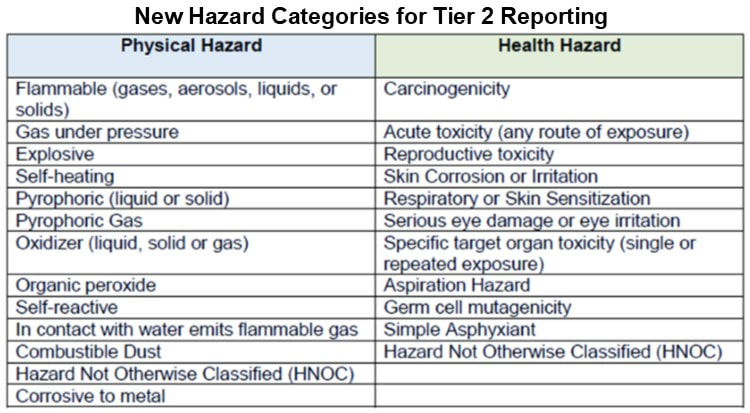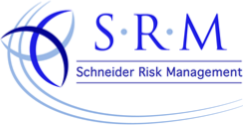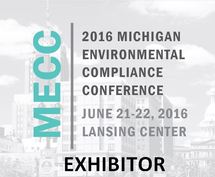|
As EHS professionals, many of us have been asked to work from home. Our jobs are essential even vital to the work that is done, but they are not necessarily critical to getting the product made. In other words, we don’t have to be on the front line creating the product. We are not at the press making sure the product is made correctly or operating an ammonia system to ensure that it functions properly. Of course, I’m making an assumption here, that you are not able to do some or most of your regular duties at the plant and have been asked to work from home. To quote the Talking Heads, “You might ask yourself,” What should I be doing during this time away from the plant? How can I be most useful? What needs some long overdue attention? How can I stay in contact with and support the production supervisors concerning routine and COVID-19 safety concerns and questions? Well, here are a couple of ideas.
chatting with them as often as you can. Talk about accidents, die changes, preventative maintenance and other challenges through face-to-face via video conferencing. Using these systems takes a little getting used to but once everybody gets the hang of it, video-conferencing is a powerful tool in your communication arsenal. Depending on your computer platform, phone OS, etc. Facetime, Skype, Zoom, Microsoft Teams and other options are available to you. Review, Revise and Update Safety and Environmental Plans and Procedures Haz Com Plan, LOTO Program, BBP Exposure Control Plan, Emergency Action Plan, the list goes on. It is always a challenge to get these documents read and updated annually or every two years to make sure that contact and lead personnel information is current, emergency equipment lists are still accurate, and procedures still make sense for today’s operations. So this new situation may be a good opportunity to take a good solid look at your existing plans. Does it read well? Is it understandable? Or do you need to have someone take a red pen to it so it is easier to read and understand? Now may also be a great opportunity to streamline and combine plans where you can. For example, required storm water management plans (SWPPP) and oil spill prevention plans (SPCC) tend to have allot of overlapping requirements. Why not combine the two and operate under one plan instead of two? It just might be easier to manage. If you have a hazardous waste contingency plan, maybe you can combine it with your emergency action plan (EAP). Again, lots of overlap between the two plans. When you are doing this, It is also a good opportunity to contact the supervisors and managers and get their input over a video chat. They’ll appreciate it and you won’t be working in a vacuum. Dust off the Emergency Response Plan (ERP) Speaking of emergency plans, one such plan that always needs personal attention is the EAP or Emergency Response Plan (ERP), depending on where you fall in the regulations. Most of the time we don’t need to use these plans, which is wonderful. But, when we do need to use them, they need to accurate. Contact information must be up-to-date. Procedures must be appropriate. People need to know what they should do. These plans minimize problems, prevent issues from becoming catastrophes, and most importantly, they keep people safe. When was the last time you reviewed your facility’s ERP / EAP? Emergency response plans and/or procedures (ERP, EAP, Hazardous Waste Contingency plan) are required by a number of regulations:
Typically, plans must be in writing, kept in the workplace, and must be available to employees for review. Other significant requirements include:
It is also important to note that the EAP is supposed to cover the entire facility even when there is a certain plant operation that requires special attention. For example, ammonia refrigeration facilities are covered by the PSM Standard and therefore are required to address emergency planning and response (29 CFR 1910.119(n)). This includes, “an emergency action plan for the entire plant,” not just the ammonia system. Sometimes we see companies prepare a ERP for the ammonia system and an EAP for the rest of the plant. The problem here is that you now have two separate plans to maintain and there should only be one for the whole facility. In addition, OSHA says that EAPs must be reviewed with employees when the plan is developed, or when an employee’s responsibilities change or when the plan changes. But it doesn’t say how often the Plan itself must be reviewed. Now might be a perfect time.
The OSHA and MIOSHA websites have an abundance of information as well as eLearning materials. The National Safety Council (NSC) and the American Society of Safety Professionals (ASSP) also have online classes available. Of course, there is also learning by traditional methods such as reading a book. Regulatory Links Here are some helpful links to help you in your EAP/ERP review and continuing education:
Learning Links:
(231) 288-1076
2155 W. Sherman Blvd. Muskegon, Michigan 49441
0 Comments
July 1st is right around the corner. We hope most of you are either done or well on your way to completing your TRI number crunching. While there is still plenty of time to get the TRI reports completed, keep in mind there are some potential pitfalls that can stop you in your tracks:
Due Diligence - TRI Applicability Determination If you are a small but growing company, don’t ignore the TRI reporting again this year because you haven't had to report in the past. Do your annual Due Diligence and prepare some calculations and analyses that you can keep in a compliance folder for when MDEQ or USEPA come to visit. This way you can easily demonstrate whether or not your facility is required to report. Your facility is required to report if it meets ALL three of these threshold criteria:
SRM can help you with your TRI determination. USEPA also has resources to help you at their website. TRI-Me Web Access USEPA requires companies to update their passwords. If you are running short on time or the certifying official is going out of town on a long business trip in two days, updating crucial information can pose a problem. What if you need to change the certifying official due to corporate reorganization? Changing information in the TRI-ME system can take a week or two to complete and can be disruptive. So you shouldn’t wait until the last minute to update your information. A good rule of thumb is to get onto the CDX system sooner rather than later and make sure you and your certifying official can access the CDX system and your TRI forms. Update your passwords as necessary. Check Your Formulas If you are like many TRI preparers, you use spreadsheets to estimate chemical usage and emissions. As we enter or remove data from year to year we can move linked data cells around the worksheet causing errors in the calculations. In addition, “Fat-Finger Syndrome” is still incurable and people often delete or move links without even knowing it. So, take some time every year to examine your formulas and links between worksheets to ensure data integrity. Contact SRM if you have questions about TRI applicability or reporting. We hare happy to help.  Once again SRM is attending and hosting a booth at the semi-annual Michigan Environmental Compliance Conference (MECC) located at the Lansing Center on June 12 and 13, 2018. There will be over 70 educational sessions, 38 exhibitors, and 18 DEQ program exhibitors. Click here for more information. Come visit SRM at Booth 35. We hope to see you there!!  Beginning July 1, 2018, all hazardous waste shipments from small and large quantity hazardous waste generators, and all shipments of polychlorinated biphenyl (PCB) waste, requiring a uniform manifest, must be submitted to the U.S. EPA for tracking in the online e-Manifest system. The receiving TSDF is responsible for submitting the e-Manifest information it receives to the U.S. EPA. It is also responsible for paying any e-Manifest processing fees due to the U.S. EPA following deployment. To ensure a smooth transition, generators are encouraged to review e-Manifest resources shared with them by their TSDF and to review resources on the MDEQ and USEPA websites. Highlights for Generators
The eManifest online system is located in the USEPA CDX online system under RCRA Info and is currently available to explore. You will need to open a CDX account if you don’t already have one. There is a Youtube video from USEPA that walks you through a fictitious site and may be helpful. To get more information, check out the MDEQ and USEPA resource pages, or contact SRM for assistance. The next Hazardous Waste Biennial Report deadline is March 1, 2018 and covers activities during calendar year 2017. The Michigan DEQ will not be sending biennial packets to waste generators. Instead, Large Quantity Generators and TSDFs will be required to report using the federal forms and instructions.
While the MDEQ will accept paper copies, it is encouraging facilities to submit their Biennial Report data electronically through the Biennial Report component of the USEPA RCRAInfo Industry Application (RIA). The RCRAInfo login page can be used to set up a RCRAInfo account and login. The web site provides guidance and information to be followed to prepare and submit the report. Additional information for submitting Biennial Reports to the MDEQ either electronically or on paper can be found at the MDEQ web site for Biennial Reporting.  Because the USEPA has adopted GHS, the reporting requirements under EPCRA have expanded. The Tier 2 reporting requirements now have 24 physical and health hazard categories. The new Tier 2 form now has 13 physical hazard choices and 11 health hazard choices. The following table lists the new categories: Source: USEPA The MDEQ is asking Michigan facilities to start updating their Tier 2 reports now to avoid the rush in January and February. The MDEQ Tier ll Manager software system is updated and ready to go! USEPA has released the updated Tier 2 Submit software for CY 2017 for those companies with facilities in other states. Helpful Hint in preparing 2018 Tier 2 Reports: Be sure to obtain updated SDSs. They will be incredibly helpful in selecting the hazard category for the chemicals you have on site. If you need assistance updating your Tier 2 report for 2017, contact our professionals at SRM. For more information, check out the following links for the MDEQ and USEPA web sites
|
|





 RSS Feed
RSS Feed
